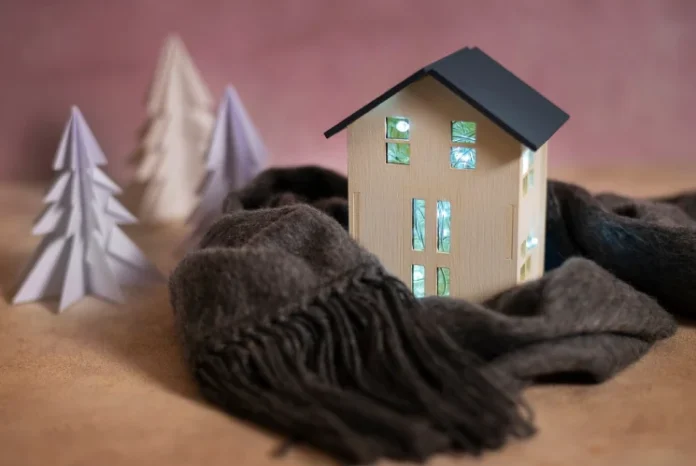Protecting your property from the harsh winter elements becomes paramount as temperatures drop across South Yorkshire. Understanding how to properly winterize your home not only prevents costly damage but also ensures your family’s comfort during the coldest months.
Local estate agents across South Yorkshire frequently emphasize the importance of preventative maintenance, noting that well-maintained properties typically retain their value better and are more attractive to potential buyers.
Professional Support
While many winterization tasks can be handled personally, some require professional expertise. Build relationships with reliable local tradespeople before emergencies arise. Many estate agents in South Yorkshire can recommend trusted professionals who understand the specific challenges faced by properties in the region.
Insulation and Heat Conservation
Your home’s insulation serves as its primary defense against winter’s chill. Begin by examining your loft insulation—the recommended depth is now 270mm, though many older properties in South Yorkshire may have less. Consider that up to 25% of your home’s heat can escape through a poorly insulated roof. Wall cavity insulation, while a larger investment, typically pays for itself through energy savings within a few years.
Internal wall insulation effectively improves your home’s energy efficiency, particularly in solid-walled properties where cavity insulation isn’t an option. Additionally, check for gaps around windows and doors, using appropriate weatherstripping or draught excluders to prevent heat loss.
Plumbing Protection
The freezing temperatures characteristic of Yorkshire winters pose a significant risk to your home’s plumbing system. Insulate exposed pipes, particularly those in unheated spaces like lofts and garages, using foam pipe insulation or heat tape. Remember to locate your stopcock—typically under the kitchen sink or stairs—and ensure it moves freely in case you need to shut off the water supply quickly.
For homes with outdoor taps, install protective covers and drain them before the first frost.
Roof and Gutter Maintenance
Your roof faces particular challenges during winter. Inspect for loose or damaged tiles, as these can lead to leaks when snow melts or during heavy rain. Clear gutters and downpipes of autumn leaves and debris—blocked drainage can cause water to back up and freeze, potentially damaging your property’s exterior walls.
Consider installing gutter guards to prevent future blockages, particularly if your property is near trees.
Heating System Efficiency
Schedule a professional boiler service before peak winter arrives. A well-maintained heating system operates more efficiently and reliably when you need it most. Bleed radiators to remove trapped air, ensuring even heat distribution throughout your home. Consider installing a smart thermostat to optimize heating schedules and reduce energy consumption.
Remember that maintaining a consistently low temperature, rather than allowing your home to become very cold and then reheating it, often proves more energy-efficient.
External Property Checks
Examine your property’s exterior thoroughly. Secure loose fence panels and gates that might be vulnerable to strong winter winds. Trim back tree branches that could potentially damage your property during storms. Check external lighting systems, ensuring they function properly during the shorter daylight hours.
Consider installing motion-sensor lights for added security and convenience during dark winter evenings.
Emergency Preparedness
Create a winter emergency kit including torches, batteries, blankets, and a battery-powered radio. Store a supply of rock salt or sand for icy paths and driveways. Keep important contact numbers readily available, including those for emergency plumbers and electricians who operate in South Yorkshire. Consider investing in a small generator if you live in an area prone to power cuts.
Interior Ventilation
Balance: While keeping warm is crucial, proper ventilation prevents condensation and subsequent mould growth. Use trickle vents or open windows briefly each day, particularly in rooms where moisture accumulates, such as kitchens and bathrooms. Install extractor fans if necessary, and consider using a dehumidifier in problem areas. Maintaining this balance between warmth and ventilation proves especially important in older properties typical of South Yorkshire.
Energy Efficiency
Measures: Review your home’s energy performance certificate (EPC) and consider implementing recommended improvements. Simple measures like installing LED bulbs and using thermal curtains can make a noticeable difference. More substantial investments might include upgrading to a more efficient boiler or installing double or triple glazing. Many local authorities offer grants or schemes to help with energy efficiency improvements.
Garden and Outdoor Space Protection
Protect outdoor furniture by storing it inside or using appropriate covers. Empty and store ceramic pots that might crack in freezing temperatures. Wrap vulnerable plants or move them to sheltered locations. Consider installing outdoor tap covers and ensuring garden tools are properly stored and protected from rust.
Regular Monitoring
Establish a routine for checking your property throughout winter. Look for signs of damage after storms, check for ice dams on roofs, and monitor indoor humidity levels. Pay attention to unusual sounds from your heating system or changes in its performance. Early detection of potential issues often prevents more serious problems from developing.
By implementing these comprehensive winter protection measures, you safeguard not only your property’s physical structure but also your family’s comfort and safety during the challenging winter months. Remember that prevention typically proves far less costly than emergency repairs, making thorough winter preparation a worthwhile investment in your property’s long-term maintenance.


